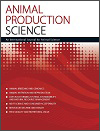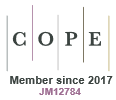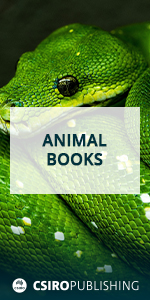The effect of time away from pasture on the nutrient intake and subsequent milk production of cows was investigated, in early and late lactation. This research found that increased time away from pasture resulted in a linear decline of milk yield. This decline in the milk yield of cows, as time away from pasture increased, was possibly driven by lower pasture mass and nutritive composition of the remaining pasture for cows returning later to the paddock.

Animal Production Science
Volume 65 Number 10 2025
Pantaneiro sheep, native to the Brazilian Pantanal, are distinguished by their rusticity and adaptability to adverse environments. This study aimed to evaluate the growth performance, ingestive behavior and carcass characteristics and meat quality of Pantaneiros lambs and compare them with Santa Inês lambs. The performance of intact lambs and the observed carcass yields demonstrated the potential of Pantaneiro sheep as a breed for intensive production.
Sustainable Animal Agriculture for Developing Countries (SAADC) is a biennial conference, serving as a platform for animal scientists, producers, and policy makers to share experiences on sustainable animal agriculture practices and research. The SAADC has successfully held eight conferences so far, with a total participation of approximately 2100 attendees from 38 countries. To move forward, SAADC will broaden the scope of its activities, including enhancing capacity building of young career scientists in developing countries.
This article belongs to the collection: Sustainable Animal Agriculture for Developing Countries 2023.
This study found that incorporating 40% plantain into dairy pastures could reduce methane production, particularly in summer, and lower nitrogen excretion from cattle in spring and autumn, suggesting potential environmental benefits, although further research with grazing cows is needed to confirm these effects.
This article belongs to the collection: Australasian Dairy Science Symposium 2024.
AN24287 Abstract | AN24287 Full Text | AN24287PDF (673 KB) | AN24287Supplementary Material (463 KB) Open Access Article
We modelled the profitability of pregnancy scanning across a wide range of environments, times of lambing, and production systems in the winter and summer rainfall regions of southern Australia. The average increase in profitability enabled by scanning for litter size was A$5.75 per ewe in the winter rainfall regions and A$4.44 in the summer rainfall regions. Pregnancy scanning for litter size is a low-cost and high-profit tool for improving reproductive rate, lamb and ewe survival rates, and lamb growth rates.
AN24278 Abstract | AN24278 Full Text | AN24278PDF (403 KB) | AN24278Supplementary Material (781 KB) Open Access Article




